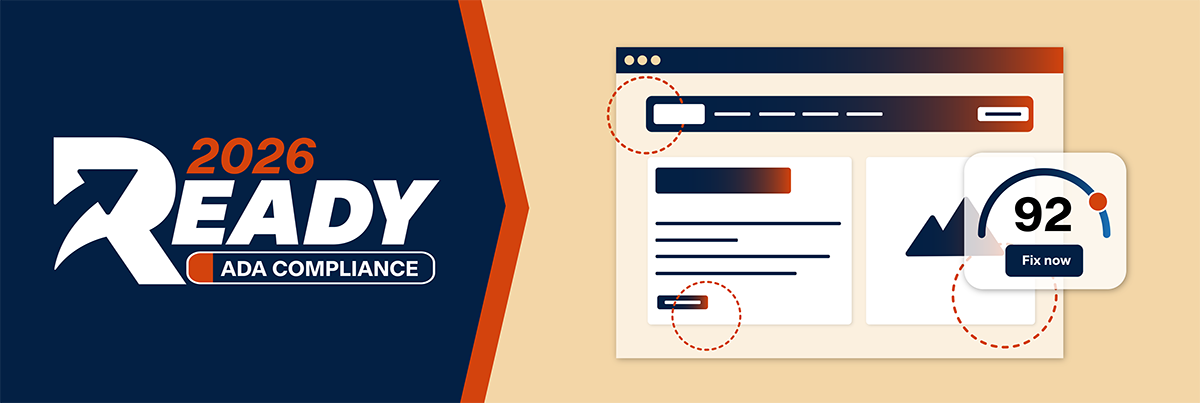
Compliance Resources
Here are some resources to help you comply with the new digital accessibility rule. New items will be added as they are released.
Start Here! Digital Accessibility Awareness
 Learn the fundamentals of digital accessibility and how you can integrate these introductory concepts into your daily work. We strongly recommend checking out these resources first to get a foundational understanding of Web Content Accessibility Guidelines (WCAG).
Learn the fundamentals of digital accessibility and how you can integrate these introductory concepts into your daily work. We strongly recommend checking out these resources first to get a foundational understanding of Web Content Accessibility Guidelines (WCAG).
These items apply to everyone and can help you reach everyday compliance:
- Make it Accessible: Drop-In/Co-Working Hours - Sign up for live support provided by the Digital Accessibility Team
- Customized Sessions - Email Digital Accessibility to request a group training or consultation
- On-Demand Sessions - Watch recorded training sessions and how-to videos in Panopto
- PAC PDF Accessibility Checker - Assess your documents for issues (only available for PC)
- PDF Accessibility playlist by Microsoft - Learn how to create accessible documents and fix issues
- Microsoft accessibility training videos - Use built-in tools for Word, PowerPoint, Outlook, Excel
- Microsoft Office Accessibility checker - Find accessibility problems and suggestions for fixes
- Excel – Accessibility Guide
- PowerPoint - Accessibility Guide
- Word - Accessibility Guide
What’s My Next Step?
Depending on the work you do, check out these additional resources.
Faculty
You develop course content that commonly ends up on web/apps (ex: Professors, Teaching Assistants).
- UT San Antonio Digital Accessibility
- Course Design Accessibility Resources
- Starting Six Accessibility Essentials
- Creating Accessible Canvas Experiences (PressBooks)
- Ally (within Canvas)
- Faculty Trainings on Digital Accessibility
- Digital Accessibility Rubric
- Caption Support Services FAQs (only available to support faculty coursework)
Web and App Professionals
You directly manage university websites and web applications (ex: Web Developers, Web Designers, Web Content Developers).
- Web Accessibility Compliance Training Module
- DubBot Scan and Reports
- ANDI
- WebAIM WAVE
- Digital Accessibility Rubric - Review the first six standards
- ADA Title II Web/Mobile Accessibility FAQs
- UT San Antonio Style Guide, Web Palette for Accessible Color Combinations
- Color Contrast Checker - See if your color usage is accessible
- Colour Contrast Analyser - Download to check websites, graphics, PowerPoints, and PDFs
- Accessibility-first design course - Explore tactics for developing an accessibility-first workflow
Technical Staff and Faculty
You create content specifically for the web and apps, or that commonly ends up on these platforms (e.g., videographers, Photographers, Campus Communicators).
- UT San Antonio Style Guide - Learn which brand colors to use to ensure accessibility
- Adobe Color Contrast Analyzer - See if your color usage is accessible
- Adobe InDesign LinkedIn Learning, Module 5 - Learn about key accessibility considerations
Social Media Managers
You manage official UT San Antonio social media channels.
- Sprout Social’s 9 guidelines to make social media posts more accessible
- Accessible Social Glossary
- Accessible Social Checklist
- Accessible Social Quick Guide
- Accessible Social Guide Book
Procurement Professionals
You are regularly involved in the procurement process.
- Resources Coming Soon
 Make It Easy for You. Make It Work for Everyone.
Make It Easy for You. Make It Work for Everyone.
Creating with accessibility in mind from the start saves you time and leads to better outcomes for everyone. Thank you for building accessibility into your work!